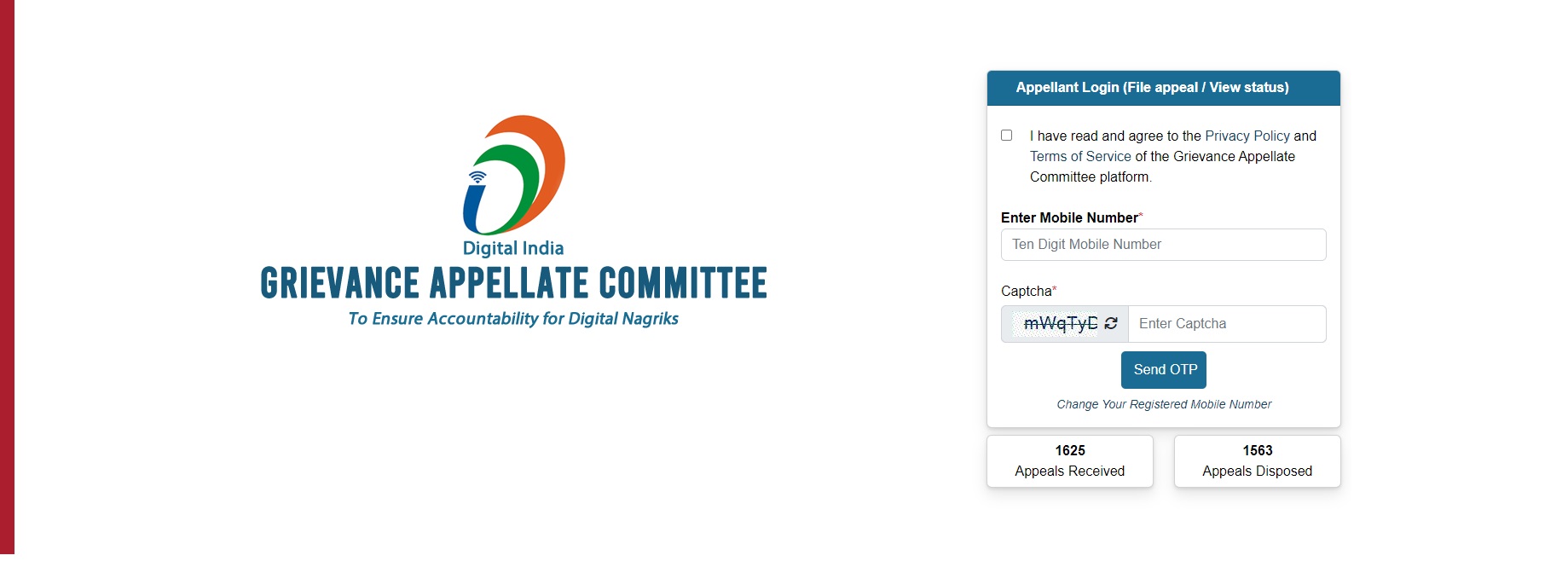Grievance Appellate Committee The Grievance Appellate Committee (GAC) is a mechanism introduced in India to provide users with a way to escalate complaints regarding content moderation decisions made by social media platforms. It is part of the regulatory framework under the Information Technology (Intermediary Guidelines and Digital Media Ethics Code) Rules, 2021.
Here’s a basic overview of how the Grievance Appellate Committee works:
Purpose:Grievance Appellate Committee
- It provides users a platform to challenge decisions made by Grievance Officers of intermediaries (social media platforms or digital platforms), if they are dissatisfied with the resolution of their grievances.
- The aim is to ensure transparency, accountability, and redressal of user complaints when it comes to content moderation or takedown decisions made by digital platforms.
Key Features: Grievance Appellate Committee
- Escalation Process: If a user is not satisfied with the outcome of their complaint filed with the Grievance Officer of the platform, they can escalate the matter to the GAC.
- Timelines: The GAC is expected to resolve the grievance in a time-bound manner, typically within 30 days.
- Digital Interface: The GAC operates through an online portal, allowing users to lodge appeals digitally, ensuring ease of access and convenience.
- Composition: The committee generally consists of government officials and experts, and it can review decisions related to blocking, takedown, or any other moderation-related actions that impact the user’s ability to access or share content.
Relevance:
The GAC was introduced to counter concerns over arbitrary or inconsistent content moderation by platforms like Facebook, Twitter, and YouTube, where users may feel their content was unjustly removed or restricted. This mechanism aims to give users a stronger voice and improve the transparency of online platforms.
Let me know if you’d like more detailed information on specific aspects!
The Grievance Appellate Committee (GAC) in India is an important mechanism established as part of the Information Technology (Intermediary Guidelines and Digital Media Ethics Code) Rules, 2021, which came into effect under the Information Technology Act, 2000. This committee was introduced to provide an avenue for users who are dissatisfied with decisions made by intermediaries (such as social media platforms) regarding the resolution of grievances related to content moderation.
Here are some key details about the Grievance Appellate Committee (GAC):
Purpose:
The GAC provides an opportunity for users to appeal against decisions made by intermediaries, ensuring accountability of digital platforms and a more structured grievance redressal process for digital citizens.
Key Functions:
- Appellate Body: It acts as an appellate body for users who are dissatisfied with how their complaints were handled by intermediaries. For instance, if a user’s content is removed, flagged, or otherwise dealt with in a manner they disagree with, and they are not satisfied with the intermediary’s response, they can escalate the issue to the GAC.
- Transparency and Accountability: It aims to hold intermediaries (such as social media platforms) accountable for their actions, ensuring greater transparency in the content moderation process.
- Time-Bound Process: The GAC is expected to process and address appeals in a time-bound manner, typically within a set number of days after a user files an appeal.
- Grievance Appellate Committee
Composition:
The committee is typically composed of individuals appointed by the Indian government. These members are tasked with reviewing appeals and making decisions based on applicable laws and the terms of the platform’s policies.
Background:
- The introduction of the GAC is part of India’s larger effort to regulate social media platforms and other intermediaries more stringently, ensuring they do not misuse their powers related to content removal and account suspensions.
- It also came in response to growing concerns about the arbitrary nature of content takedown and the lack of user recourse on large platforms.
- Grievance Appellate Committee
Process for Appeal:
- Filing a Complaint: A user first lodges a grievance with the intermediary’s internal grievance officer.
- Appeal to GAC: If the user is dissatisfied with the intermediary’s decision or if there’s no response within the prescribed time limit (typically 15 days), they can appeal to the GAC.
- Review and Decision: The GAC will then review the case and pass a decision that is binding on the intermediary.
The Grievance Appellate Committee is intended to provide a fair and transparent mechanism for content dispute resolution in India, balancing freedom of expression with the need for platforms to enforce community guidelines.
The Grievance Appellate Committee (GAC) is an entity established by the Indian government under the IT (Intermediary Guidelines and Digital Media Ethics Code) Rules, 2021. It was set up to address and resolve complaints that arise in the digital domain, particularly those concerning the removal of content or user grievances related to social media platforms, digital intermediaries, and other online services.
Grievance Appellate Committee
Key Functions:
- Appeals Process: If a user’s grievance is not satisfactorily resolved by a social media platform’s Grievance Officer within 30 days, the user can escalate the issue to the GAC.
- Content Moderation Issues: It handles complaints related to the content moderation practices of digital intermediaries, especially concerning freedom of speech, user privacy, and arbitrary removal of posts.
- Review of Decisions: The GAC has the power to review the decisions made by grievance officers at platforms like Facebook, Twitter, or YouTube.
- Grievance Appellate Committee
Composition: Grievance Appellate Committee
The GAC is composed of members appointed by the government. It includes officials and experts from various fields, such as law, technology, and governance, to ensure fair and impartial handling of cases.
Significance:
The GAC serves as a check against the actions of major digital platforms, ensuring they remain accountable in their content moderation decisions. This structure provides users with a more formal mechanism for redressal beyond the internal systems of the platforms themselves.
Would you like more details on how it works or specific examples of cases handled by the GAC?

